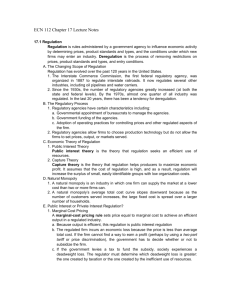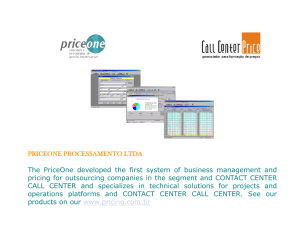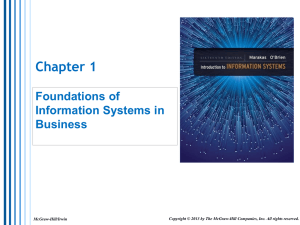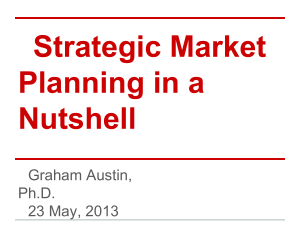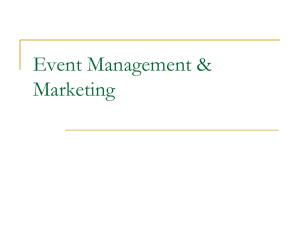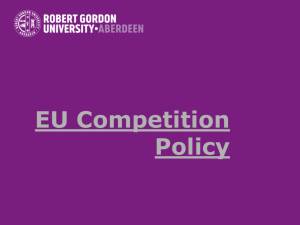Predatory pricing
advertisement
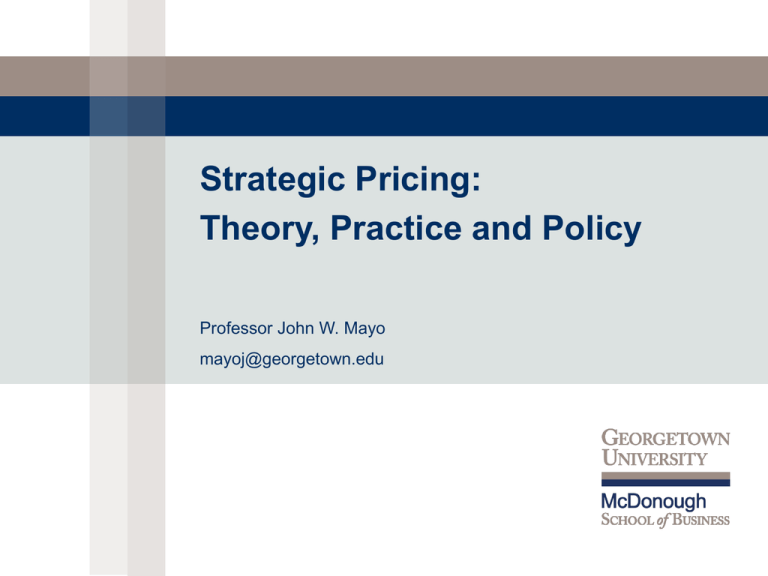
Strategic Pricing: Theory, Practice and Policy Professor John W. Mayo mayoj@georgetown.edu Hurricane Charlie ….and Dennis, Katrina and Rita • What about a $10 bag of ice? Price Gouging H.R. 1252 (Passed U.S. House of Representatives, 284-141) • “It shall be unlawful for any person to sell, at wholesale or retail in an area during a period of emergency, gasoline…at a price that – (A) is unconscionable excessive; and (B) indicates that the seller is taking unfair advantage of the circumstances to increase prices unreasonably.” The “Spirit” of Pricing!!! 4 The “Spirit” of Pricing • What is the pricing policy of Spirit Airlines? • Is this smart business strategy? • What are the potential strategic responses? • Is it a troublesome practice that should be controlled or halted by regulation or legislation? 5 Oh Say Can you See? • What happened to the price of American flags in the wake of the 9/11 terrorists attacks on Washington and New York? 6 Policy toward Pricing • Price collusion • Monopoly pricing • Price leadership • Predatory pricing U.S. Policy deterrents to Price fixing • Sherman Act, section 1 – felony, up to $1 million, 10 years in jail • Case Law – Per Se violation • Trenton Potteries (1927) : “The aim of every price-fixing agreement, if effective, is the elimination of one form of competition. The power to fix prices, whether reasonably exercised or not, involves the power to control the market and to fix arbitrary and unreasonable prices. The reasonable price fixed today may ..become the unreasonable price of tomorrow..” • • Corporate Leniency Policy Article 101 • 1. The following shall be prohibited as incompatible with the common market: all agreements between undertakings, decisions by associations of undertakings and concerted practices which may affect trade between Member States and which have as their object or effect the prevention, restriction or distortion of competition within the common market, and in particular those which: • (a) directly or indirectly fix purchase or selling prices or any other trading conditions; • (b) limit or control production, markets, technical development, or investment; • (c) share markets or sources of supply; • (d) apply dissimilar conditions to equivalent transactions with other trading parties, thereby placing them at a competitive disadvantage; • (e) make the conclusion of contracts subject to acceptance by the other parties of supplementary obligations which, by their nature or according to commercial usage, have no connection with the subject of such contracts. • 3. The provisions of paragraph 1 may, however, be declared inapplicable in the case of: • - any agreement or category of agreements between undertakings, • - any decision or category of decisions by associations of undertakings, • - any concerted practice or category of concerted practices, • which contributes to improving the production or distribution of goods or to promoting technical or economic progress, while allowing consumers a fair share of the resulting benefit, and which does not: • (a) impose on the undertakings concerned restrictions which are not indispensable to the attainment of these objectives; • (b) afford such undertakings the possibility of eliminating competition in respect of a substantial part of the products in question. 10 European Commission Cartel Fines (Million Euros) 11 Large Company fines imposed by the European Commission Firm Fine (euros) Year ThyssenKrupp1 (IP/07/209) 479 669 850 2007 Hoffmann-La Roche AG (IP/01/1625) 462 000 000 2001 Siemens AG1 (IP/07/80) 396 562 500 2007 ENI SpA1 (IP/06/1647) 272 250 000 2006 Lafarge SA1 (IP/02/1744) 249 600 000 2002 BASF AG2 (IP/01/1625) 236 845 000 2001 Otis1 (IP/07/209) 224 932 950 2007 Heineken NV1 (IP/07/509) 219 275 000 2007 Arkema1 (IP/06/698) 219 131 250 2006 Solvay1 (IP/06/560) 167 062 000 2006 1 Appeal filed with the Court of First Instance Monopoly and Competition $ mc ac cs D mr What are the objections to monopoly? Do these translate into policy against monopoly pricing? Monopolization requires “abuse” in both Europe and the U.S. “The offense of monopoly under Section 2 of the Sherman Act has two elements: (1) the possession of monopoly power in the relevant market and (2) the willful acquisition or maintenance of that power as distinct from growth or development as a consequence of a superior product, business acumen or historical accident” United States v. Grinnell Corp. 384 U.S. 563, 570-571 (1966) Price Leadership • What is the legal treatment of Price Leadership? • “[T]he fact that competitors may see proper, in the exercise of their own judgment, to follow the prices of another manufacturer, does not establish any suppression of competition or show sinister domination.” • U.S. v. International Harvester Co. (1927) 15 • Delta Airlines cuts its reimbursement to travel agents. Other airlines follow suit…Travel agents sue. Predatory Pricing What is “predatory pricing”? Simple story: Large firm cuts prices drives smaller firms from market then raises prices to monopoly levels McGee (Journal of Law and Economics) -re-examines Standard Oil case. Predatory pricing is not rational. Why engage in predation when merger is cheaper. More recent literature suggests that: 1. predatory pricing may reduce sales price if then merge 2. Predation may be for demonstration effect 3. McGee assumes merger to monopoly is legal Predation requires (necessary conditions): 1. Initial Market power 2. Low Barriers to Exit 3. High barriers to entry Predatory pricing: 1. Areeda-Turner (Harvard Law Review, 1975) a. p<mc b. p<mc up to minAC then p<ATC c. p<avc Price MC ATC AVC D Quantity Predation – the demonstration effect or “I’ll Teach that SOB a lesson” Price FOB Distance from plant Pricing of Concrete construction Blocks





